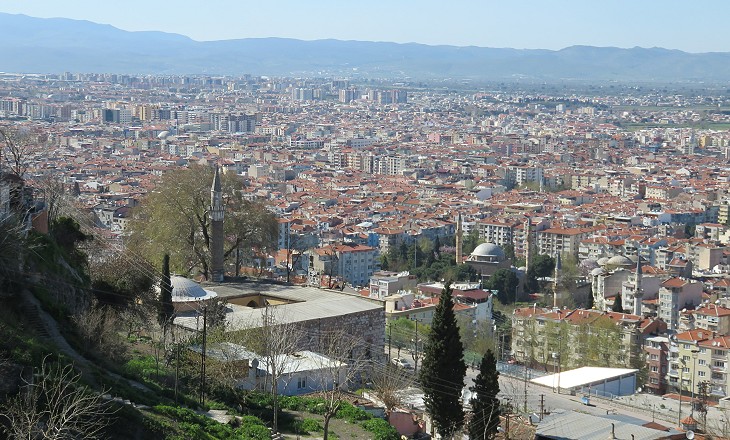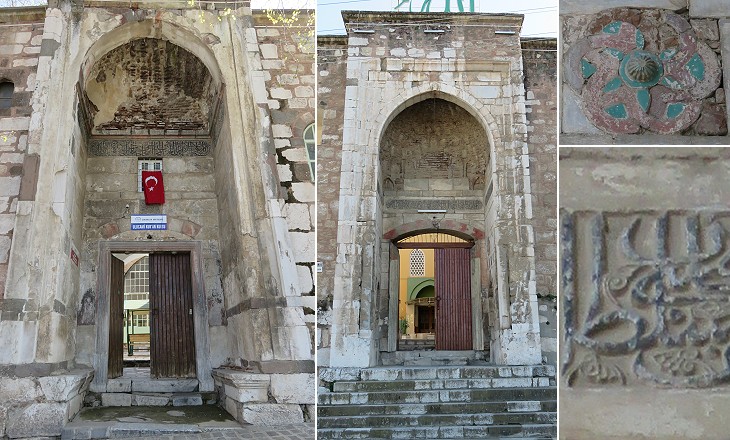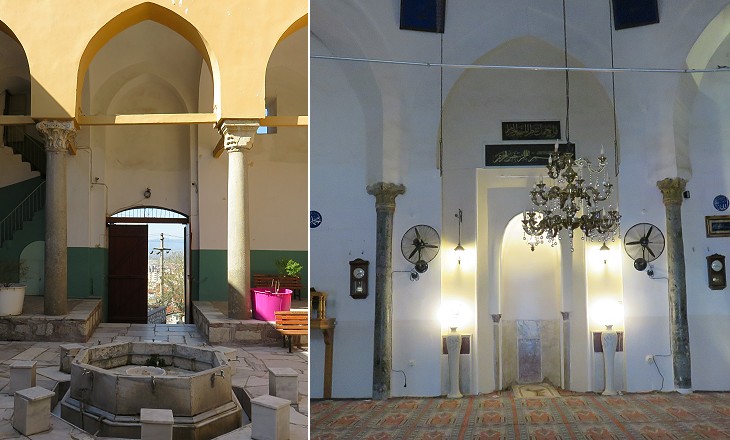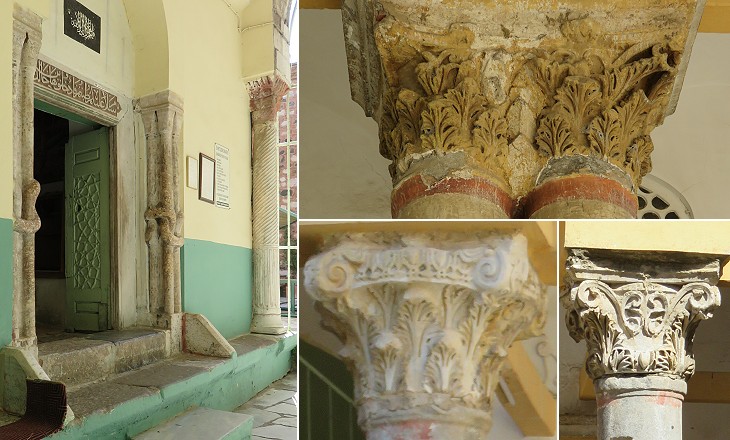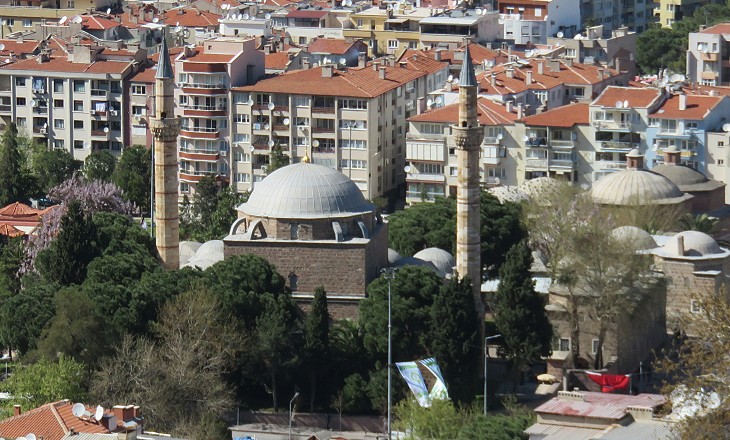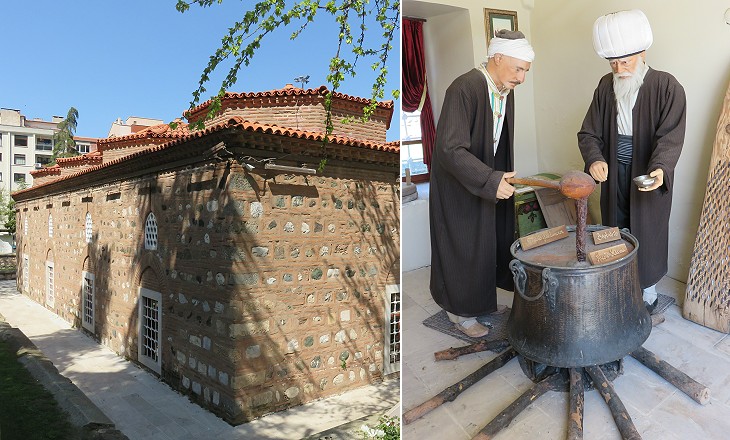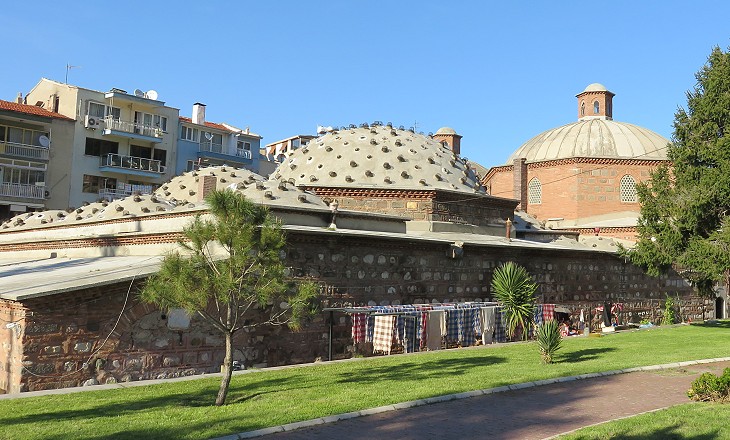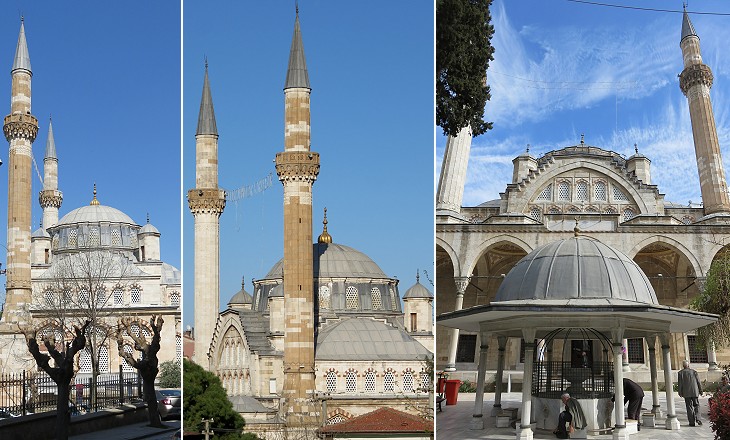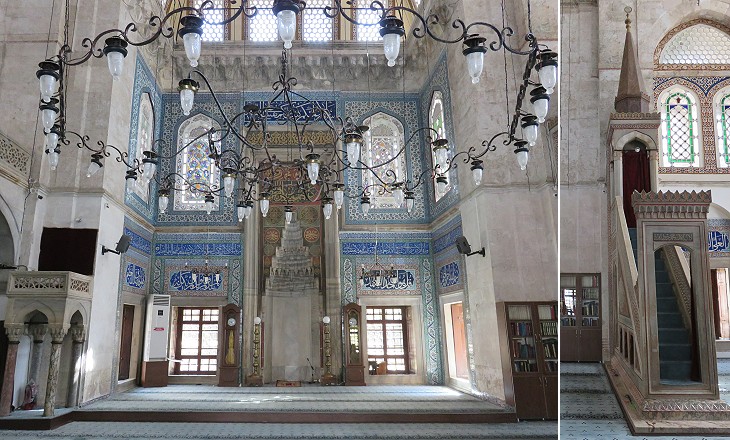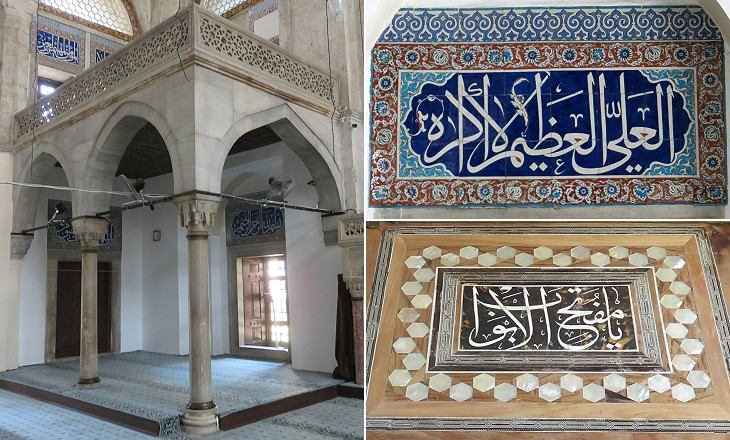  What's New! Detailed Sitemap All images © by Roberto Piperno, owner of the domain. Write to romapip@quipo.it. Text edited by Rosamie Moore. Page added in June 2015. |
 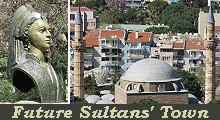 - Manisa - Main Mosques - Manisa - Main Mosques(bust of Ayse Hafsa Sultan and the mosque she built) You may wish to read page one first.
On September 5, 1922 retreating Greek troops set fire to Manisa. Nearly 90% of its buildings were destroyed and some 4,000 inhabitants died. Sultan and Muradiye mosques were surrounded by open spaces and were not affected by the fire, similar to Ulu Camii which stands in a commanding position on high ground.
Manisa was seized in 1075 by the Seljuks who founded a powerful Sultanate at Konya, but after a few years the Byzantines managed to reconquer the town. They held it until 1313 when they surrendered it to Sarukhan Beg, a commander of the Germiyanid Principality based in Kutahya. Sarukhan Beg established his own principality with Manisa as its capital. In 1374 Ishak Celebi, his grandson, built Ulu Camii (Great Mosque) and an adjoining medrese on the site of a previous church using some ancient materials. A hammam and a tekke (Dervish monastery) are located near the mosque.
The prayer hall is entered from a courtyard with a plain fountain through three rectangular doors. Inside, the mihrab, a semi-circular niche with two embedded columns on the sides, sits below the main dome. The dimly lit prayer hall has small rectangular windows on three sides. The Qibla, the mihrab wall, facing the mountain, has no windows.
The Great Mosque of Manisa is seen as a step towards the development of large buildings including medreses, mausoleums and other facilities in addition to the mosque itself. In particular the design of Ulu Camii is believed to have influenced that of Uc Serefeli Camii at Edirne. In 1410 the Ottomans put an end to the Sarukhanid rule, but Manisa retained its role of capital of the territory of the former principality.
In 1513 Sehzade (Prince) Suleiman was appointed governor of Manisa by his father Sultan Selim I. He was accompanied by his mother Ayse Hafsa Sultan. After his son's accession to the throne in 1520, Ayse Hafsa Sultan became his most influential advisor until her death in 1534. She promoted the construction at Manisa of a large kulliye, a complex of buildings which included a mosque, a primary school, a medrese, an imaret (soup kitchen), a hammam and a darussifah (a hospital for the mentally ill).
Maybe Mutesellimi, governor of Manisa in 1745-55 had too much Mesir Paste: I went back to Muselem and being now admitted to a hearing was received with much politeness. He was so young that his whiskers had but just begun to grow. (..) Muselem as the chief of the town began very carefully to think about his health which was not only followed by his servants, but by all in the town whom I had occasion to converse with. It is common enough amongst the Turks and even Greeks to be sick as often as they have an opportunity of speaking to a physician. (..) A Seraglio of fifteen women which at so early an age he kept was enough to hurt it, but I would not advise any physician who may chance to be in my situation and is consulted by a Turkish grandee to tell him this as he might perhaps become a martyr to truth. It is best to think and do what appears to be of service and talk as little as possible. Fredrik Hasselquist - Voyages and Travels in the Levant in the Years 1749, 50, 51, 52.
Sultan Suleiman appointed Sehzade Mehmet, his preferred son, governor of Manisa and, after Mehmet's death in 1543, Sehzade Selim who in 1566 became Sultan Selim II. Serving in Manisa was regarded as a sign of favour because it was closer to Constantinople than other towns (Amasya, Konya and Trebizond) where princes were sent to gain political and military experience. The princes/governors of Manisa resided in a palace (Saray-i Amire), which similar to Topkapi Sarayi had courtyards, gardens and pavilions. It was located near Sultan Kulliyesi, but it was surrounded by houses made of mud and timber and the entire complex was destroyed by fire in 1922.
Sultan Murat III was governor of Manisa prior to his accession to the throne in 1574 and in 1583 he commissioned the construction of a large complex in the town where he had spent his youth. It is located very near Sultan Kulliyesi and it was designed by Mimar Sinan, the architect in charge of supervising all constructions promoted by the Sultans. He was assisted by Mehmet Aga, a young architect best known for having designed Sultan Ahmet Camii in 1606-616. The complex included a medrese and an imaret which today house the Archaeological and Ethnographic Museums of Manisa.
Many Turkish towns boast having a Mimar Sinan Mosque, but in most cases the building is a very ordinary one, the design of which was formally endorsed by Sinan, but without any direct involvement. Muradiye Camii instead can be included among the finest works by Sinan. It shows how he combined structural solidity with the presence of many windows, a balance he had struggled to achieve in his early works. The Sultan's patronage is evident in the very elaborate decoration of the interior.
The image used as background for this page shows a doorknob inside this mosque. Move to page three - Other Monuments of Manisa or return to page one covering its ancient past. Clickable Map of Turkey showing all the locations covered in this website (opens in another window).  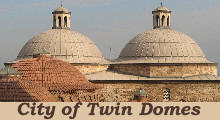 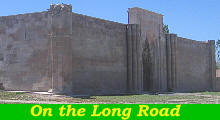 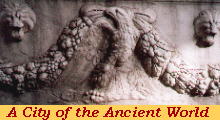 |
